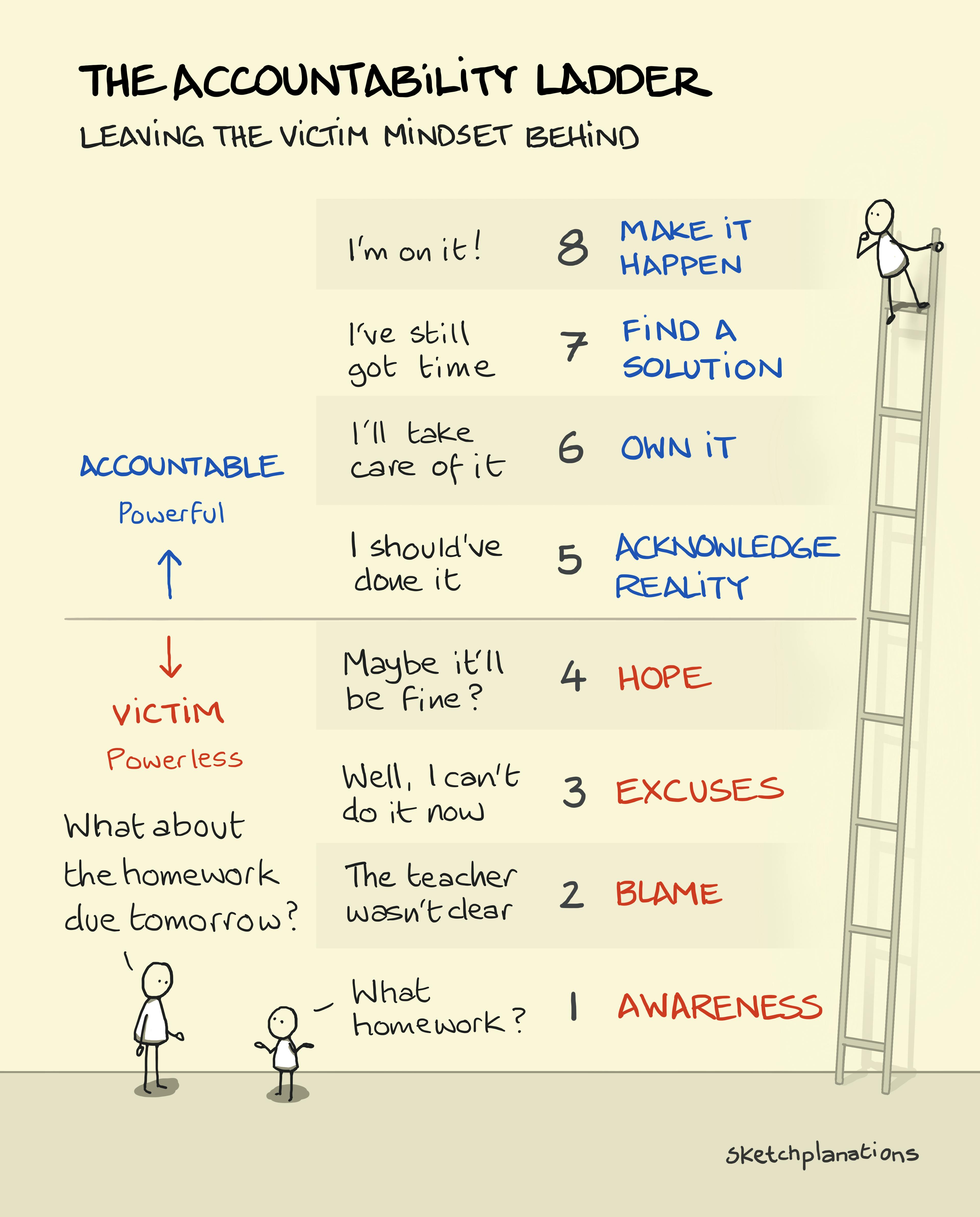The accountability ladder

👇 Get new sketches each week
The accountability ladder is a framework for taking accountability for a situation in which we can move from a powerless victim mindset to a powerful, accountable mindset.
There are many ways to respond when things go wrong or need to be done. If you choose a victim mentality, it’s easy to ignore the situation, blame others for it, declare your powerlessness, or just wait and hope. Or you can consider yourself accountable and adopt a mentality of power, acknowledging the situation, owning it, looking for solutions, and taking action to do your best.
Bruce Gordon explains the accountability ladder (grainy, slightly odd video ) with a fun story about him and his son in which they realise his son has homework due tomorrow that’s not done.
Most of us have more power over our situations and more potential for impact than we usually give ourselves credit for—whether it's our jobs, our friends, the environment, or local issues. Perhaps considering your position on the accountability ladder is a good place to start.
I love this quote from Erling Kagge , the first person to walk to the Triple Poles :
"Most people underestimate the possibilities you have in life. And that’s a bit sad…But don’t underestimate yourself. Also, like I said: Get up in the morning."
— Erling Kagge
There are many versions of the accountability ladder. I couldn’t find a definitive source. If you know, please get in touch.

